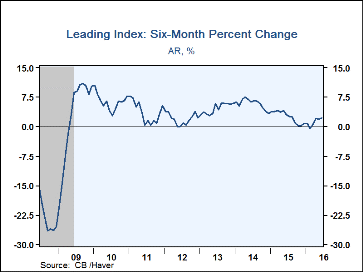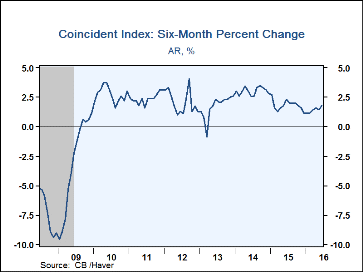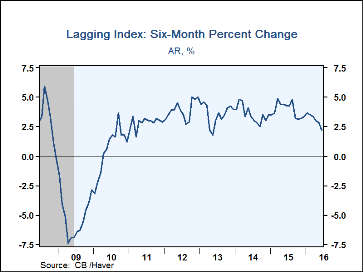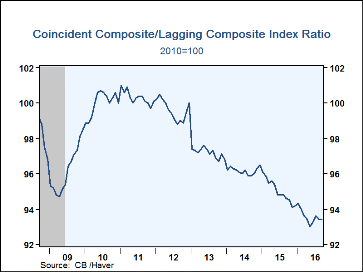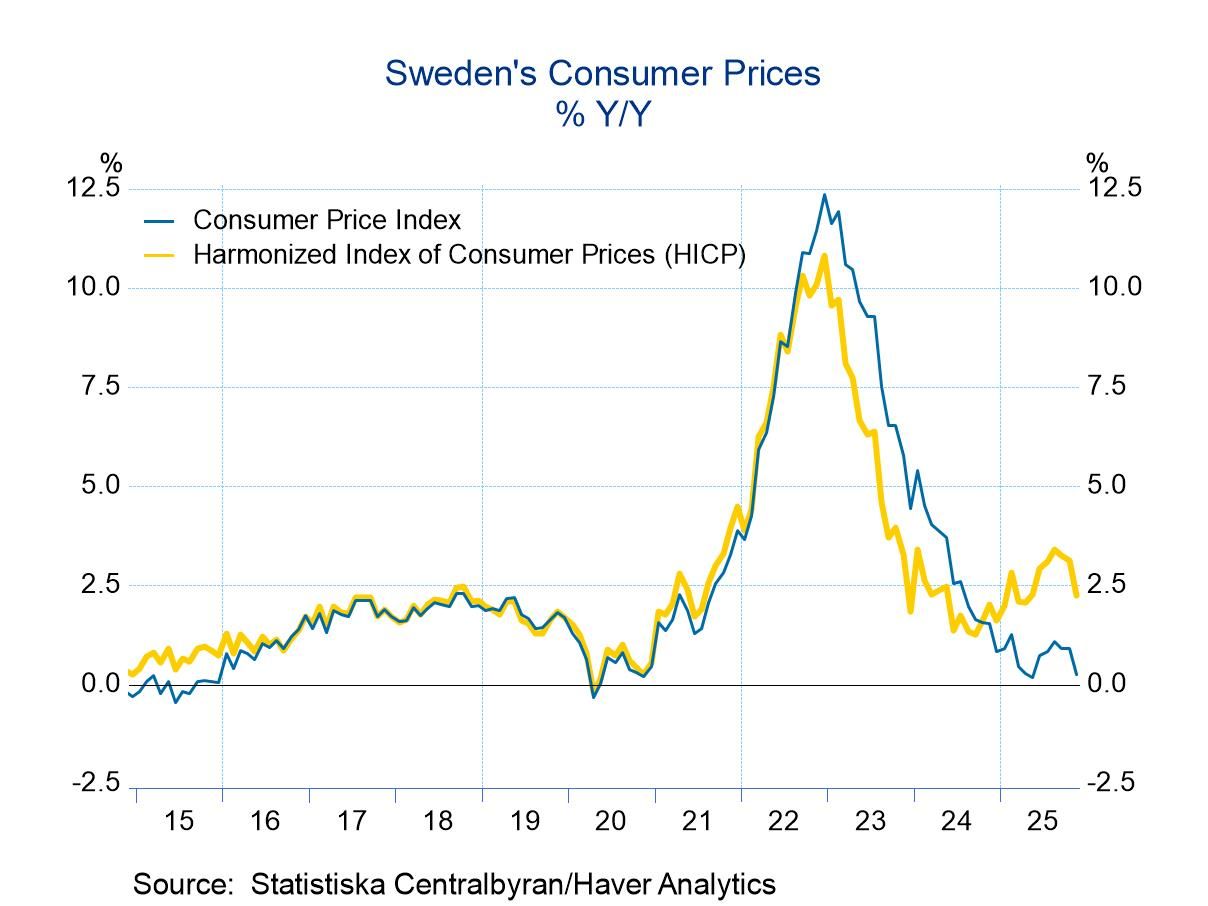 Global| Oct 20 2016
Global| Oct 20 2016U.S. Leading Economic Indicators Recover
by:Tom Moeller
|in:Economy in Brief
Summary
The Conference Board's Composite Index of Leading Economic Indicators rebounded 0.2% (1.5% y/y) during September following an unrevised 0.2% decline. The increase matched expectations in the Action Economics Forecast Survey. The six- [...]
The Conference Board's Composite Index of Leading Economic Indicators rebounded 0.2% (1.5% y/y) during September following an unrevised 0.2% decline. The increase matched expectations in the Action Economics Forecast Survey. The six-month change in the index improved to 2.3% (AR), but was below its peak growth of 7.1% roughly one year ago.
Contributing positively to the index last month were more building permits, fewer initial claims for jobless insurance, a steeper interest rate yield curve, more factory orders for consumer goods and better consumer expectations for business/economic conditions. These gains were offset by negative readings from a decline in stock prices, a shorter average workweek, a lower ISM new orders diffusion index, fewer capital goods orders, lower stock prices and the leading credit index.
The coincident index increased 0.2% (1.4% y/y) following no change, revised from 0.1%. Six-month growth rose to 1.8%, its best since October. Each of the component series contributed positively to the index, including nonfarm payrolls, personal income less transfers, manufacturing & trade sales and industrial production.
The lagging index rose 0.2% (2.8% y/y) after an unrevised 0.2% gain. Three-month growth fell to 2.2% versus a 4.9% high early last year. The services CPI, the average duration of unemployment, the 6-month change in unit labor costs and the consumer installment credit/income ratio contributed positively to the index. The number of consumer & industrial loans outstanding contributed negatively for the fourth straight month.
The ratio of coincident-to-lagging indicators also is a leading indicator of economic activity. It measures excesses in the economy relative to its ongoing performance. This ratio held steady m/m, and was up slightly from the May low.
The Conference Board figures are available in Haver's BCI database; the components are available there, and most are also in USECON. The expectations are in the AS1REPNA database. Visit the Conference Board's site for coverage of leading indicator series from around the world.
Bad Credit, No Problem? Credit and Labor Market Consequences of Bad Credit Reports from the Federal Reserve Bank of New York is available here.
| Business Cycle Indicators (%) | Sep | Aug | Jul | Sep Y/Y | 2015 | 2014 | 2013 |
|---|---|---|---|---|---|---|---|
| Leading | 0.2 | -0.2 | 0.5 | 1.5 | 4.3 | 5.8 | 2.9 |
| Coincident | 0.2 | 0.0 | 0.3 | 1.4 | 2.5 | 2.6 | 1.4 |
| Lagging | 0.2 | 0.2 | 0.0 | 2.8 | 3.7 | 3.7 | 3.9 |
Tom Moeller
AuthorMore in Author Profile »Prior to joining Haver Analytics in 2000, Mr. Moeller worked as the Economist at Chancellor Capital Management from 1985 to 1999. There, he developed comprehensive economic forecasts and interpreted economic data for equity and fixed income portfolio managers. Also at Chancellor, Mr. Moeller worked as an equity analyst and was responsible for researching and rating companies in the economically sensitive automobile and housing industries for investment in Chancellor’s equity portfolio. Prior to joining Chancellor, Mr. Moeller was an Economist at Citibank from 1979 to 1984. He also analyzed pricing behavior in the metals industry for the Council on Wage and Price Stability in Washington, D.C. In 1999, Mr. Moeller received the award for most accurate forecast from the Forecasters' Club of New York. From 1990 to 1992 he was President of the New York Association for Business Economists. Mr. Moeller earned an M.B.A. in Finance from Fordham University, where he graduated in 1987. He holds a Bachelor of Arts in Economics from George Washington University.


